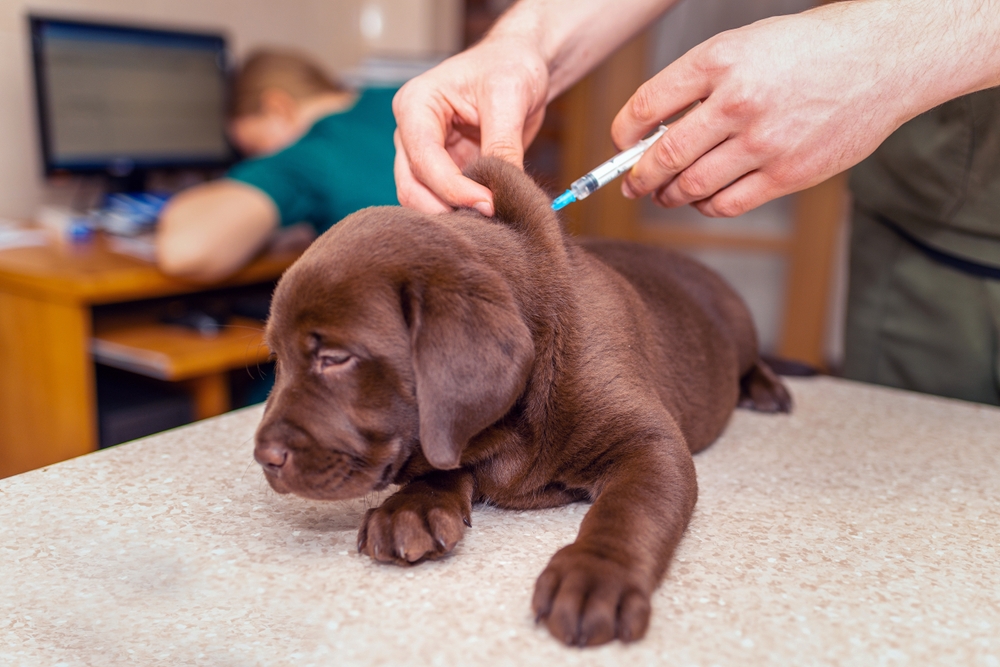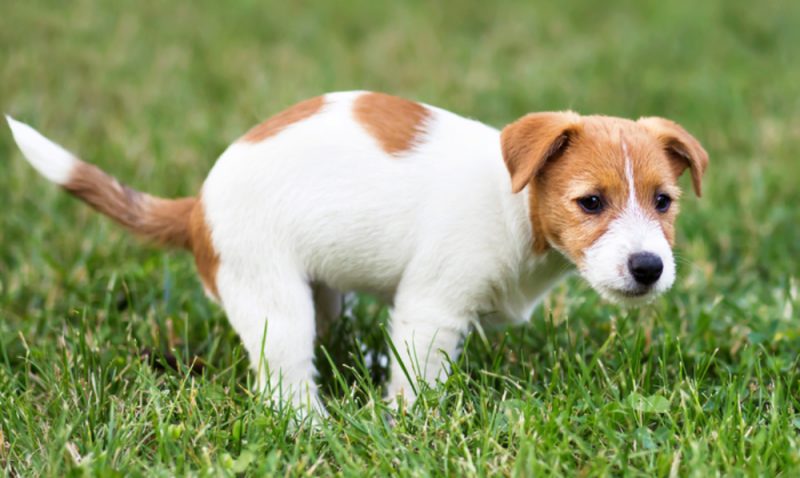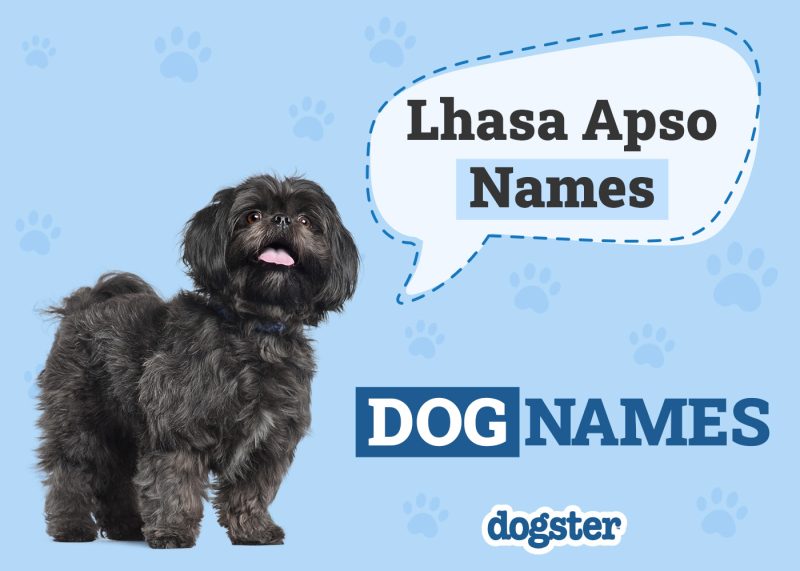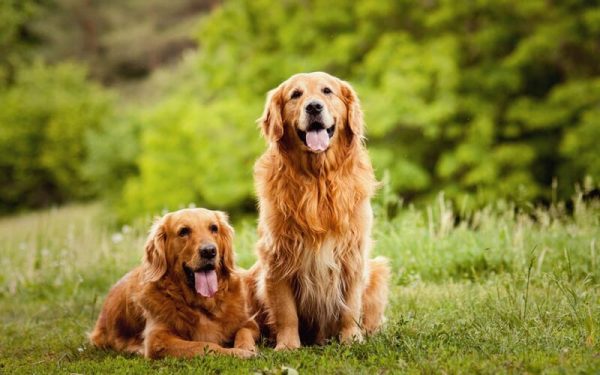Getting a new dog is a highlight for many families, and there aren’t too many things in this world cuter than an adorable puppy. But somewhere in all the fun and cuddles, we need to start the more serious task of training. We don’t want to overwhelm a puppy as they are settling into their new home, so it’s a good idea to break things down into blocks, starting with the basics.
Here, we’re going to go over 5 key training tips and tricks that will set your pup up for success, and make your lives easier, too. We’re going to start with

Preparation

- Vaccination: Ensure your puppy has started their primary vaccination course to prepare them for socializing and going outside in the future.
- Get a crate: I recommend crate training for puppies – not only does a crate give them their own space in the house (a bedroom), but it is also a way to keep them (and your belongings) safe when you go out, reduce separation anxiety, and make toilet training much easier.
- Have a family meeting: Consistency is one of the most important things to a puppy, so everyone needs to be playing by the same rules. It’s not fair to confuse your puppy by having some people stick to the plan, while others let them get away with things they shouldn’t.
- Food & treats: You’re going to need lots of treats for training, so I recommend keeping aside a portion of their meals for this. That way, they’re not filling up on treats, and they’re not going to refuse to eat their ‘boring food’ at meal times.
- Commands: When teaching a puppy a new command, start by using the word with the action as they do it, followed by a reward. Eventually, they will learn that the word goes with the action, and it can become a command.

The 5 Key Training Tips & Commands for 2-Month-Old Puppies
1. Recall

Many puppy owners start with commands like ‘sit’ and ‘stay’, but it is more important that your pup learns to come when you call, as it can keep them safe when they’re old enough to start venturing out into the world.
It’s pretty common for dogs to end up with multiple nicknames, but for now, make sure everyone is calling the puppy by the same name, preferably one that is short, sharp, and easy to yell over a long distance if needed.
- Start by using their name often when they are with you, giving them a small treat when you say their name.
- Move further and further away, calling their name and saying ‘come’, and rewarding them with a treat and/or a fuss when they come to you.
- Progress to calling them from different parts of the house, and calling them when you’re not in active training mode.
- Once they are old enough to start going out, you can gradually increase the distance and difficulty. Be aware that dogs with a high prey or scenting drive will be more easily distracted.
- If needed, use a long lead when taking them out to ensure they can’t run off.
- Don’t use their name in anger – they should feel happy when they hear their name and want to come to you. If you need to tell your puppy off or stop them from doing something, use the word ‘no’ in a low, growly voice.
2. Drop It/Leave It

Anyone who’s tried to remove something from their dog’s mouth will know the value of teaching a puppy this command. There are few things in this world that move faster than a dog that has heard the words “What have you got in your mouth?”
This command is often overlooked but is one of the most important ones to instill in your pup from a young age, as it could save their lives (or save you from a hefty vet bill!). It will also help with their toy and food etiquette training later.
- Start with non-food, non-exciting objects (although, let’s face it, everything is exciting to a puppy!).
- Encourage them to take the low-value object in their mouth, then offer a higher-value item (toy or treat) and say the words “drop it” or “leave it” when they drop the object from their mouth.
- Do not give the command until they drop the item – they don’t know what we want yet. Once they have done this several times, they will start to associate the words with the action – that is when you can start to use it as a command.
- Move onto higher value items, asking them to drop a toy they really like, in exchange for another toy or treat.
- Once they’ve mastered this, it’s time to ask them to drop what is in their mouth without offering them something in exchange. If they do this, you can bring out a treat, or just reward them with a fuss.
- The next step is to get them to follow the “drop it” or “leave it” command over distance. This is an invaluable command to perfect as it allows you to get your dog to drop something that could be toxic or dangerous if you are out on a walk.
3. Toilet Training

Some dogs take to this really easily, others (particularly tiny breeds) can be more challenging. Before we begin, let’s go over a few important points:
Once again, crates are great: Dogs will try to avoid soiling their beds, so keeping them confined in a crate that is not much larger than their bed overnight will help teach them to hold on until they are let out.
Be prepared for an early wake-up: 8 hours is a long time for a young pup to hold their bladder, so be prepared to get up at the crack of dawn to take them out to the toilet. The more often they have accidents indoors, the more they learn that toileting inside is okay. This is another reason crates are great – if they do have an accident, it is in the crate, not on the floor, making them less likely to learn that toileting on the floor is okay.
Be consistent: Dogs are creatures of habit and will become accustomed to toileting at certain times of the day. If you sleep in and come down to a mess, that is your fault, not your dog’s.
- Decide on a toilet command/word. I just use the word ‘toilet’, but choose something you want to say whenever they go out.
- First thing in the morning, before coffee or anything else, take your puppy out to where they will be going to the toilet. Do not get excited or talk much, just take them outside and wait for them to go. When they do a pee or poop, wait for them to be finished, and excitedly use your ‘toilet’ word.
- If your dog is too distracted by you, this may work better if you can leave them outside while you watch from inside. But you MUST watch, because you need to make sure they actually go, and that you celebrate when they do.
- After you let them back inside, wait 2-5 minutes, and take them out again. Why? Most puppies are easily distracted and don’t always finish. Many owners complain that their puppy goes to the toilet inside just minutes after being outside, and this is why. Some pups, particularly males, will even benefit from a third visit outside.
- If you find an accident inside, clean it with an enzyme cleaner to remove all traces of the smell, and move on.
- If you see your puppy going to the toilet inside, use your “no” growl, pick them up, and take them outside. If they do go to the toilet outside, praise them for it. If they do nothing outside, quietly bring them back indoors, but it is still worth letting them back out after a few minutes.
- This may seem quite tiresome, but your pup needs to learn to fully empty their bladder and bowels before they are allowed to come inside for play and food.
- Once your pup has eaten, wait
- 10 minutes if they didn’t poop before breakfast
- 20 minutes if they did poop before breakfast, and take them outside for another toilet visit.
- Watch and learn your puppy’s cues for needing the toilet. Some will go to the door and whimper, some will sit and stare at you, and some will start sniffing the wall or ground, or start pacing and circling. Don’t assume they will hold up a sign that says “I need the toilet!”
- Be patient – some dogs take a week or two to master toilet training, others can take months. Be consistent and persistent and try not to lose your cool.
If you're looking for an all-in-one, pet-friendly, enzyme cleaner, we highly recommend the Hepper Advanced Bio-Enzyme Pet Stain & Odor Eliminator Spray.
- ADVANCED ENZYMATIC CLEANER - Penetrates the most stubborn smells and stains at the deepest molecular...
- FOR ANY MESS, ON ANY SURFACE - This pet odor eliminator cleans your carpets, floors, furniture,...
- FRESH, NATURAL ODOR - Our unique formulation doesn't rely on dangerous or unpleasant chemical...
It eliminates tough stains and odors easily and is excellent for accident prevention. Plus, it comes with a 100% satisfaction guarantee! Click here to order now.
At Dogster, we’ve admired Hepper for many years, and decided to take a controlling ownership interest so that we could benefit from the outstanding products of this cool pet company!
4. Food and Toy Etiquette
Although it may not be safe to get between an adult dog and their food, it is something that you should be able to do if you teach your pup from a young age. Show your pup that you can take toys away (because you will also give them back), and that you can pick up their food and touch them while they are eating (because they will be allowed to finish their meal).
Dogs that resource guard have often come from a situation where they have had to constantly compete for food or toys, and were not given adequate access to those resources. A well-adjusted dog should not object because:
- they know that these behaviors are not acceptable around humans, and
- they are secure in the knowledge that we won’t deprive them of their food or toys permanently.
For some pups, you may have to use your “no” or “drop it” command initially, but the aim here is for your pup to show no signs of stress or concern when there are hands between them and their food or toys. This is a training step that is really only safe to do when they are young, which is why it is important to start early.
5. Handling

As a vet, my job is much easier if my patients are accustomed to having their mouths, teeth, feet, ears, and eyes looked at and touched, so it’s important to get your pup used to this at home. Rub their eyelids, wipe their ears with a tissue, open their mouths and rub their gums. Play with their toes, touch their nails, and be prepared for some protests at the start. Most of the time, a protesting squeal is a combination of surprise and “I don’t like it.” Provided you aren’t hurting them, it’s okay if they don’t like it! Once you’ve ignored their tantrums once or twice, and rewarded them once the task is complete, you’ll both realize that it’s not such a big deal after all.

Key Things to Remember
- Giving commands: As mentioned earlier, start by giving a command when they do an action naturally until they learn to associate the word with the action.
- They heard you the first time: Once they know their name and what a command means, get their attention and give the command. Once. You want your dog to sit after one word, not “sit, sit, sit, sit….etc”. If they are looking at you but haven’t followed the command, look back at them and cross your arms until they do. If this doesn’t work after a few seconds, break off by moving a few steps away, and start again.
- Puppies get tired and have short attention spans: Training sessions at this age shouldn’t go for more than 10 minutes or so, but you can have multiple sessions per day. Always aim to finish on a high note, even if it means going back to a really simple command that they will follow so you can reward them.
- It’s not a competition: Just like with humans, different pups will learn at different rates, so don’t get disheartened if it feels like your puppy isn’t getting it – they will! Unfortunately, they’ll often seem to forget it again as they go through adolescence…but it does come back!
One more thing to remember is, that you don’t have to be alone in training your puppy. You can always reach out to a veterinarian and ask them for guidance or helpful tips.
If you need to speak with a vet but can't get to one, head over to PangoVet. It's our online service where you can talk to a vet online and get the advice you need for your pet — all at an affordable price!


Final Thoughts
Puppies are a lot of fun, but they are also a lot of work. But if you are consistent, persistent, and all stay on the same page, it will all be worth it when you have a happy, well-mannered dog that you can allow to run off-leash, confident that they will come back to you when called, and drop anything they shouldn’t put in their mouths.
Remember to take things step by step, celebrate small victories, seek help when you need it, and most of all, have fun.
Featured Image Credit: OlgaOvcharenko, Shutterstock






















